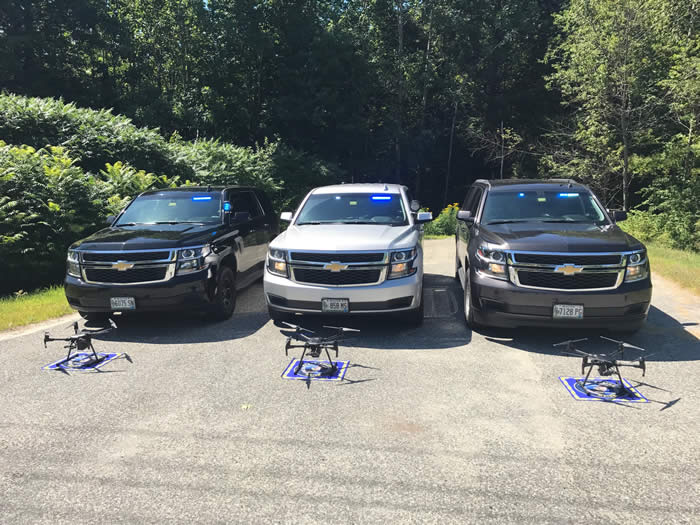
The State of Maine Crash Reconstruction Unit is comprised of State Police, Municipal and County Law Enforcement personnel. Currently the unit includes 13 Troopers, 9 County deputies, 17 Municipal officers, and 1 Fire Marshal's Investigator. Unit members are located throughout the entire state and are chosen based on both geographic location and ability.
The objective of the Crash Reconstruction Unit is to conduct in-depth investigations and analyses of major traffic collisions throughout the state. Investigations include the reconstruction of a crash and a study of the factors that may have contributed to that crash. These factors include environmental, human and mechanical and are associated with the three phases of a collision, which are pre-crash, at-crash and post-crash. The ultimate objective of the program is the utilization of these identified causation factors to prevent collisions of a similar nature from recurring.
Unit members are trained in the physics of collision analysis and reconstruction, occupant kinematics (human factor analysis), vehicle dynamics (collision damage analysis), scene photography, the use of various measuring instruments and Computer-Aided Design software.
A Crash Reconstruction Report can include, but is not limited to, information such as:
- Roadway Description
- Driver Profiles
- Autopsy and Injury Description
- Physical Evidence Description
- Scene Diagram Drawn to Scale
- Physical Evidence Analysis
- Vehicle Damage Description
- Speed /Velocity Calculations
- Vector Analysis and Diagram
- Time/Distance Positioning Analysis
- Collision Sequence
- Photographs
- Conclusions
- Recommendations
All of the reconstruction specialists in the state are required to be certified through the Maine Criminal Justice Academy. The Maine State Police Crash Analysis Unit is responsible for reviewing all of the crash reconstructions that are done in the state.
Forensic Mapping Unit
The Forensic Mapping Unit utilizes Leica Total Measuring Stations to accurately measure and plot various roadway and evidence points at a scene. Those points are then downloaded to a computer aided drawing program, where a scale diagram is generated. Typically, the Forensic Mapping unit is called to measure large-scale scenes or serious collisions involving more than one vehicle. The equipment is also utilized at homicide and various other criminal scenes. Currently there are 6 Total Stations located geographically throughout the state. In 2017 the Maine State Police began using Drones and associated software to assist with mapping and reconstruction.
Vehicle Autopsy Unit
The Vehicle Autopsy Unit is used to conduct extensive post-crash vehicle examinations when the vehicle's condition is thought to be a contributing factor of the crash. These exams focus on the mechanical and safety related parts of the vehicle such as brakes, suspension and steering components. Currently the unit consists of 6 Troopers, 3 civilian motor vehicle inspectors, 2 State Police Fleet Vehicle Technicians and 1 municipal officer. All vehicle autopsy specialists are certified inspection mechanics.
Fleet Safety Board
The Fleet Safety Board reviews all crashes involving State Police vehicles to determine if the crash was preventable. The board also makes recommendations regarding remedial training to prevent future crashes.